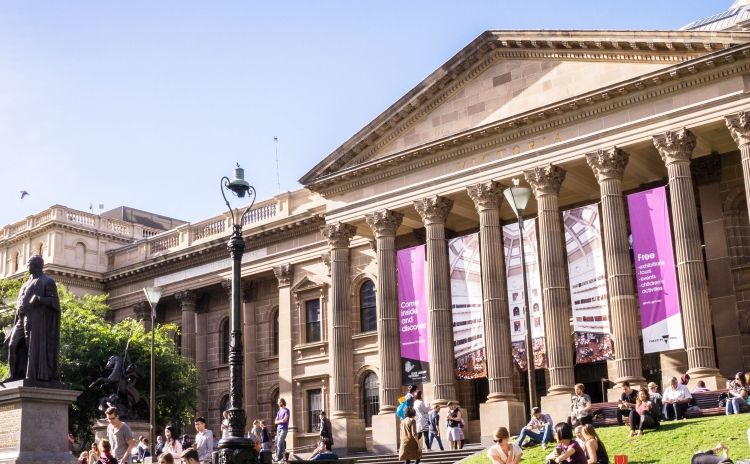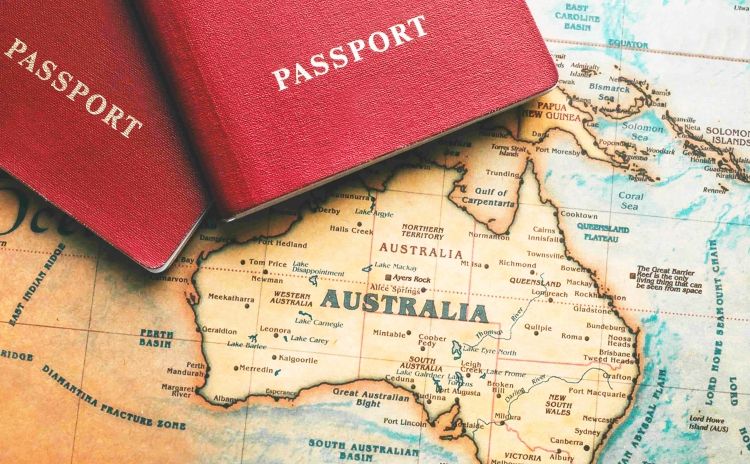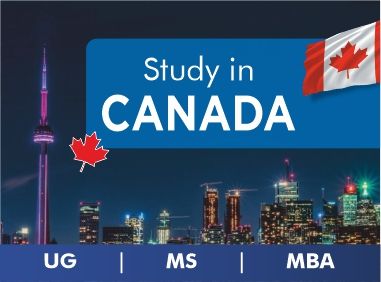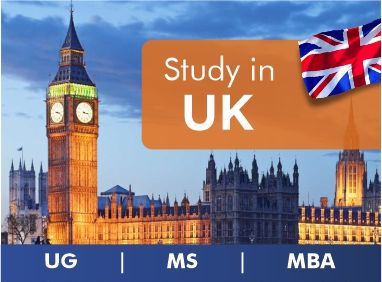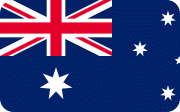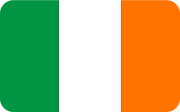
Australia is one of the best destinations to pursue higher education for international students. In Australia, there are two main intakes for international students; February intake also known as Semester 1 intake, and July intake also known as Semester 2 intake.
As the name suggests, the primary (main) intake begins in February, and the secondary intake commences in July. The primary intake, as is the case in most study destinations, will have the greatest number of courses offered by almost every university. There will be a limited number of universities offering a restricted number of courses for the July intake.
Also, some Australian universities accept applications throughout the year. However, such choices are limited. In addition to the above two intakes in Australia, there is another intake too, the September intake which is also known as Semester 3, with even fewer courses.
| Intakes in Australia | Starts from |
| February/Semester 1/T1 | Late February/early March to late/ early June |
| July/Semester 2/T2 | Late July/early August through to November |
| September/Semester 3/T3 | Late October/early November through to February |
Australia Intakes 2023: Which Intake to Choose?
Deciding which intake is ideal for you can be a little complicated. When choosing a course of study, take into account a variety of aspects, including the program’s availability, your academic history, admission test results, acceptance rates, employment prospects, and your readiness to begin the course.
While the majority of master’s programs have February or July intakes, some professional programs like health and nursing, only have February intakes. Once more, several universities only offer a small number of degrees like IT and business in the September/November intake.
Indian students typically choose the July intake. However, the February intake, which is the first intake in Australia, is just as effective for some programs.
In situations where final results are awaited, Australian universities provide conditional acceptance. This clause can be helpful to you because results at Indian universities and colleges are typically announced around May or June. With no need to wait or lose time, you can begin the visa application process.
Meet The Experts to Start Your Global Journey
We help you win. That only game that truly matters, your career.
February Intake in Australia 2023
February intake is also known as Semester 1 intake or T1 intake in Australian Universities. This intake is considered the primary intake in Australia. Various universities usually close their applications for the February Intake at the end of December. This intake starts in February or early March and goes till late May or early June.
Merits of Applying in February Intake in Australia
Students who apply for this intake get directly enrolled for the first semester of the course as February intake is a primary intake. During this intake, various types of financial aid and scholarships are available. A wide range, of course, options are available for international students as it is a major intake. Australian universities receive a large number of applicants from different parts of the world during the February intake. Therefore, enrolling in this intake can offer all students great cultural exposure.
List of Top Australian Universities for February Intake 2023
Let us now look at the universities that accept applications for the February intake:
- Australian National University (ANU)
- University of Sydney
- University of Melbourne
- University of New South Wales (UNSW)
- University of Queensland
- Monash University
- University of Western Australia
- University of Adelaide
- University of Technology Sydney
- University of Wollongong
Are You Planning to Study in Australia?
Click Here to Book Your Free 1-On-1 Session with Experts
July Intake in Australia 2023
July intake is also known as Semester 2 intake or T2 intake in Australian Universities. This intake is considered as the secondary intake in Australia. This is normally between February and June for July intake. International students are normally accepted on a first-come, first-served basis because of the enormous number of applicants and competition. The limited number of Australian universities offer a limited number of courses to choose from in the July intake.
Merits of Applying in July Intake in Australia
Australian universities accept international students’ applications for all the courses during the July intake. July intake is in accordance with the Indian academic session. Students who missed the February intake have a good option. Students get more time to apply to colleges and get a study permit and visa.
List of Top Australian Universities for July Intake 2023
Here is a list of universities offering July intake in Australia:
- Australian National University
- The University of Sydney
- The University of Melbourne
- University of New South Wales
- Monash University
- The University of Western Australia
- The University of Adelaide
- University of Technology, Sydney
- Macquarie University
- Curtin University
- Queensland University of Technology
- RMIT University
September Intake in Australia 2023
September intake is also known as Semester 3 intake or T3 intake in Australian Universities. This intake is the least popular among the students but can still be considered good for a certain number of courses. Most vocational courses are offered in this intake and only a specific number of universities offer courses.
Merits of Applying in September Intake in Australia
Since a very small number of applicants apply during the September intake in Australia, the competition is very low. If you were unable to get admission to one of the two main intakes in Australia, you can target the September intake at Australian universities.
List of Top Australian Universities for September Intake 2023
Here is a list of universities offering September intake in Australia:
- Bond University
- Australian National University
- University of New South Wales (UNSW)
- Charles Sturt University
- CQ University
- University of Southern Queensland
Check Your Score Now with a Free Practice Test
See where you stand with our practice tests. Find the right way to improve with our strategy sessions.
Documents Required for Admission Intakes in Australia
After you are admitted to the July intake in Australia, you must submit the below-mentioned documents.
- All certified transcripts and prior academic records from accredited institutions of higher learning.
- For the July intake in Australia, IELTS requires a minimum score of 6 – 6.5 and higher for undergraduate programs and 7-7.5 and above for graduate programs.
- Further test results, if requested or necessary by the university.
- SOP (Statement of Purpose)
- At least, 2 Letters of Recommendation (LORs)
- Updated CV or Resume
- Passport-size photographs
- Visa
Step-by-Step Guide for 2023 Intakes in Australia
The intake process will be consistent and uniform for all the universities & colleges. Do keep in mind that deadlines vary by university, as there is no set deadline for every college/university in Australia. The steps will be the same for every university.
- Make a list of the universities to which you wish to apply.
- Search for particular intake colleges in Australia 2023; create a shortlist, and choose a college/university before the deadline.
- Choose courses that are best suited to your career, academic background, the field of study goals.
- Please check the university’s website for the application forms and requirements.
- Examine the English Language Requirements at Australian Universities. The admission requirements and tests that you must take can be found on the University’s website.
- Exams, such as the GMAT/GRE require much earlier registration than English Language Proficiency tests such as IELTS and TOEFL.
- In any case, it is critical to appear for such exams three months in advance, as you may be required to retake the test.
- Start planning your final application. The application should highlight your unique qualities, credentials, and achievements as a candidate and present you in a favorable light.
- For reference letters, contact your immediate supervisors and professors. Begin developing your SOP (Statement of Purpose).
- The documentation process should begin no later than a month before the application deadline.
- Submit the application by the university deadline.
- Colleges/universities will contact you regarding the status of your application after some time. You should respond to that email as soon as possible.
- Some colleges/universities in Australia may request a video interview; be prepared for that.
- Once you have received confirmation from the University, please make a quick decision. As soon as you have made your decision, send an email to the college/university. As previously stated, it may come down to a first come, first served basis, so do not wait until the deadlines to respond.
- You will be asked to pay the non-refundable confirmation fees once you have enrolled.
- Some processes will take time, which should always be factored in before planning. Apply for a study loan for your international studies as soon as you receive confirmation from the university.
- It will also take time to process a student visa in Australia. All paperwork should be documented. Once you have all of the necessary documents, the visa process is not as difficult as it appears.
- Check to see if you are eligible for any study abroad scholarships in Australia.
- You should apply for them as soon as you receive your acceptance letter.
- You have put in all the effort, and now it is time to fly. Most courses begin early, so it is best to arrive in Australia a month in advance and look for on-campus/off-campus housing.
- Before you fly, create a pre-departure checklist and check every box on it – gather all of your necessary documents and photocopies; also, you must obtain an international credit/debit card.
Application Process of Intakes in Australia
The application process may vary depending on the university. However, there is a common application process involved for the intake in Australia. Those are as follows:
- Shortlist of Australian universities for Intake.
- Know about the eligibility requirements, deadlines, and any relevant details for PG and UG courses according to upcoming intake in Australia.
- Take the EP test for English writing, reading, and speaking. Like IELTS, PTE, etc. for the Intake in Australia.
- Start contacting former professors and graduate schools for SOP and LOR.
- Fill out the application form & deposit the non-refundable fees.
Documents Checklists for Intakes Universities in Australia
The admission process requires a complete set of documents, therefore it is advisable to gather all of your paperwork in advance to avoid any last-minute hassles. The following list of paperwork is required before you can be admitted:
- EP test Scores
- GMAT or GRE score (according to the course requirements)
- Marksheets
- Degree Transcripts
- Previous year of Academic Transcripts
- 10+2th class certificates
- Additional performance certificates in the academic year.
- LOR (Letter of Recommendation)
- SOP (Statement of Purpose)
- Self-Assessment Essay
- Resume
- Copy of Visa
- Experience letters
- Scholarships receipts









